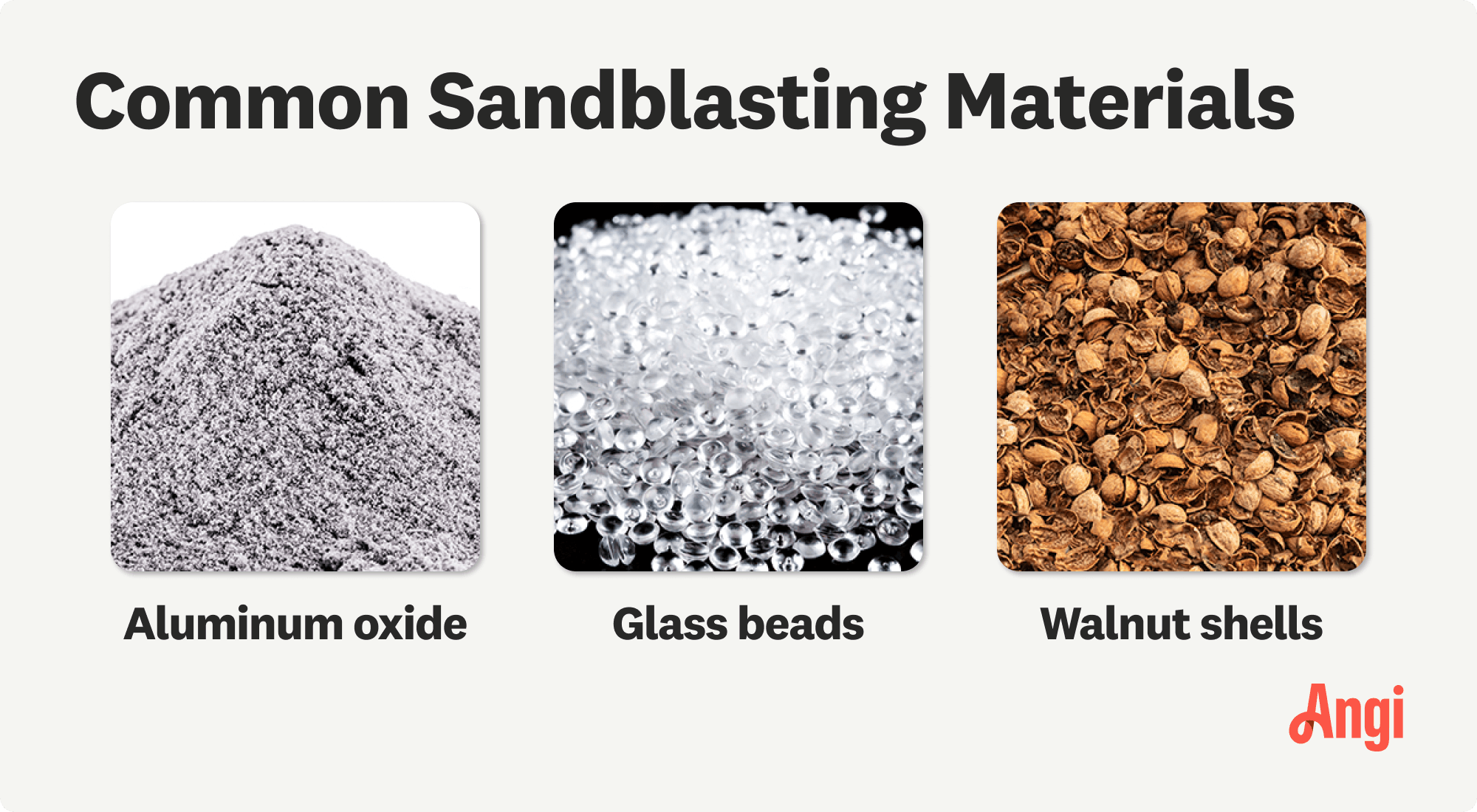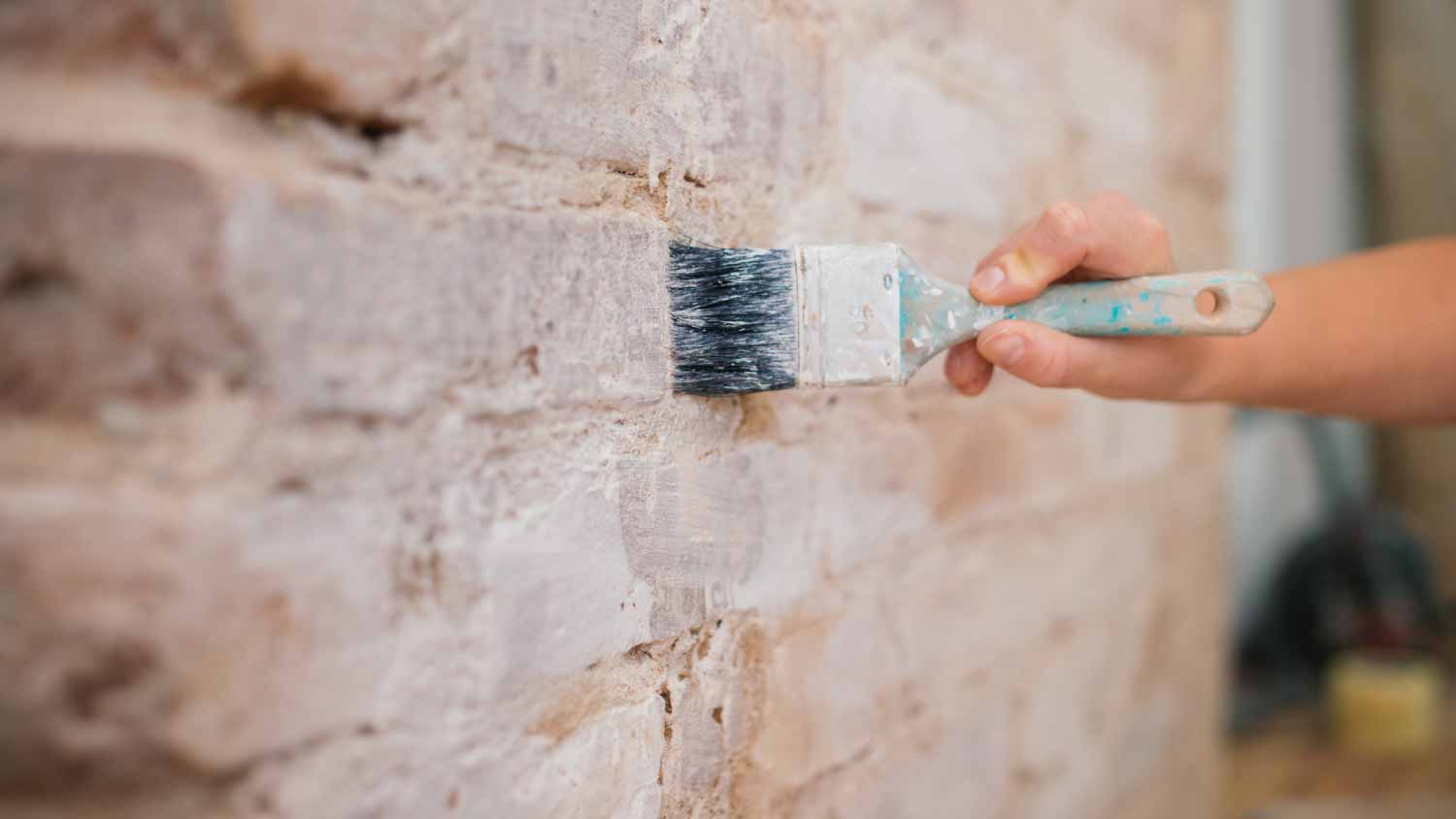
The cost to paint the interior of a house in Washington, D.C. depends on size, layout, type of surface, and more. Learn what factors can influence your total in this guide.
Soda blasting is gentler than sandblasting, as baking soda is less abrasive than sand


Soda blasting uses baking soda.
Sandblasting uses more abrasive media.
Soda blasting is gentler than sandblasting.
Use soda blasting for delicate applications and sandblasting for heavy grime.
Sandblasting and soda blasting are the two most common ways to clean or prepare surfaces for industrial coatings. These processes require similar equipment, but soda blasting uses baking soda (sodium bicarbonate), while sandblasting uses silica sand or other media, such as glass beads or steel shot. When comparing soda blasting versus sandblasting, both options are equally effective in some situations, but for other applications, one may be preferable to the other.
Soda blasting and sandblasting use pressurized air or water to force an abrasive material towards a surface at a high speed to clean or prepare it for a finish, such as paint.
Sandblasting is the older and more abrasive option, which is preferable for cleaning heavily soiled, difficult-to-clean surfaces and preparing metals for a finishing coating.
Soda blasting is gentler, making it ideal for light cleaning and applications on delicate surfaces.
| Type of Difference | Soda Blasting | Sandblasting |
|---|---|---|
| Media | Baking soda | Various abrasives |
| Applications | Cleaning light grime | Cleaning heavy grime |
| Surfaces | Delicate materials | Sturdy materials |
| PSI | 20 | 70–120 |
| Safety | Safer | Less safe |
| Deodorizing | Yes | No |
| Rust Preventing | Yes | No |
| Storage Time | Up to 1 year | Indefinitely |
| Eco-Friendly | Yes | Depends on the media |
Soda blasting is a cleaning process that uses compressed air to blast particles of sodium bicarbonate, also known as baking soda, at a surface. It's a less-abrasive cleaning option compared to sandblasting, making it ideal for removing paint or grime from surfaces without damaging the underlying material.
Best for: Removing dirt, paint, or other grime from delicate surfaces.

Sandblasting is a more intense cleaning process that strips stubborn materials off surfaces with a high-pressure stream of abrasive material, such as steel grit or glass beads. These materials are propelled through a system using compressed air and are directed at the object to blast it clean. Sandblasting can be considered the next step up from pressure washing.
Best for: Preparing equipment for painting or metal for welding. Removing rust, paint, or other substances from durable surfaces.

It’s easy to see that soda blasting uses baking soda and sandblasting uses sand, but that’s far from the only difference between these two processes. Sandblasting regularly uses other media aside from sand.
Soda blasting is only performed with different particle sizes of sodium bicarbonate (baking soda) whereas sandblasting uses various media.
While silica sand is the best-known media used in sandblasting, other substances are more commonly used because they present fewer exposure risks. Many are more recyclable since they are not destroyed as easily.
Substances more commonly used than sand in modern sandblasting include aluminum oxide, corn cob, crushed walnut shells, garnet particles, copper slag, steel grit, glass beads, steel shot, or plastic pellets. These materials have differing levels of hardness and abrasiveness, each with different applications.
Both soda blasting and sandblasting can be used for cleaning rust, corrosion, grime, paint, or grease and for prepping surfaces for painting. In general, soda blasting is better for removing labels and stickers and light to medium levels of grime, grease, rust, and corrosion.
Sandblasting should be reserved for removing heavy grease buildup, paint, dirt, rust, or corrosion. Sandblasting is also better for roughing up a surface before painting, preparing metal for welding, or creating a non-slip surface, as soda blasting is usually too gentle.
Sandblasting is too abrasive for many materials, and the high friction level results in heat buildup that can damage others. It should be used on more durable materials such as steel, iron, hardwood, hard plastics, and concrete. Sandblasting is preferable when working with sturdy materials because it is faster and more efficient.
Soda blasting is preferable for softer materials that can be warped or damaged by heat, including softer plastics, chrome, soft woods, soft stones, and soft metals, such as gold. Soda blasting is often a better option when working with finished surfaces, such as masonry, polished stones, and finished wood, because it is less likely to damage the item or surrounding materials. Soda blasting is often used in the automotive industry because it will not damage rubber seals or glass.
Both soda blasting and sandblasting require the use of similar equipment—commonly an an air compressor, blast pot, hose, and a nozzle. Both options also require the use of personal protective equipment (PPE), such as respirators, gloves, eye protection, and protective clothing.
The only difference is that soda blasting requires an air cooler and moisture separator to remove moisture from the compressed air to prevent the baking soda from clumping.
Soda blasting is done with fewer Pounds per Square Inch (PSI), typically at only 20 PSI.
On the other hand, sandblasting is done with higher pressure, usually 70 to 120 PSI. The difference in air pressure contributes to the higher abrasiveness of sandblasting.
While you must utilize proper safety equipment while sandblasting or soda blasting, soda blasting is much safer overall. Though you should always avoid breathing any abrasive media, inhaling silica dust is particularly dangerous, as this particle has been known to cause lung cancer, lung damage known as silicosis, kidney disease, and heart disease.
Beyond the inhalation risk, soda blasting creates less heat, reducing the risk of fire, explosion, and skin burns. The softer material is also safer to touch while operating (though this should still be avoided). Baking soda also leaves no heavy metal residue, unlike some sandblasting media. If you need to sandblast something in your home, hiring a local sandlbasting professional to handle the task is often advisable to avoid any safety hazards.
Baking soda is naturally deodorizing, which makes soda blasting a good option for removing odorous substances, including mold and smoke residue. Sandblasting offers no deodorizing benefits.
While both methods can remove rust, soda blasting leaves a protective powder on the surface, eliminating the need to immediately apply a finishing coat or additional coating to protect the metal from flash rusting.
When you are ready to apply a final coating to the soda-blasted metal, this powder must be removed, or it can cause problems when applying paint or other substances such as epoxy. Remove the powder coating before painting or applying other coatings by scrubbing it off or using water and vinegar.
A downside of working with baking soda is that it naturally absorbs moisture, causing it to become clumpy over time. After it has formed clumps, the media cannot be used for soda blasting, or it will clog the nozzle. Silica and other blasting media are not similarly prone to clumping. For best results, use soda blasting media within a year of purchase.
While it is often possible to recycle sandblasting material, capturing and reusing all of the media is impossible. Though sodium bicarbonate cannot be recycled, it is a biodegradable, eco-friendly material. Unfortunately, many sandblasting media, such as plastic beads, are not, though materials such as walnut shells or corn cob are.
From average costs to expert advice, get all the answers you need to get your job done.

The cost to paint the interior of a house in Washington, D.C. depends on size, layout, type of surface, and more. Learn what factors can influence your total in this guide.

The cost to paint the interior of a house in Indianapolis, IN depends on size, layout, type of surface, and more. Learn what factors can influence your total in this guide.

Refinishing stairs is a great way to spruce up one of a home's most dominant focal points. High-quality wood should be allowed to shine. Learn the cost to refinish stairs in this guide.

Wondering how much you should pay a painter upfront? Check out this guide to learn when and how much you can expect to pay house painters for services.

When a ceiling has stains, you can follow a few steps for how to paint a water-damaged ceiling yourself—or a pro can fix the damage and paint for you, too.

There are many alternatives to painting brick walls, including staining and whitewashing. Learn more about different methods for bringing new life to your brick space.